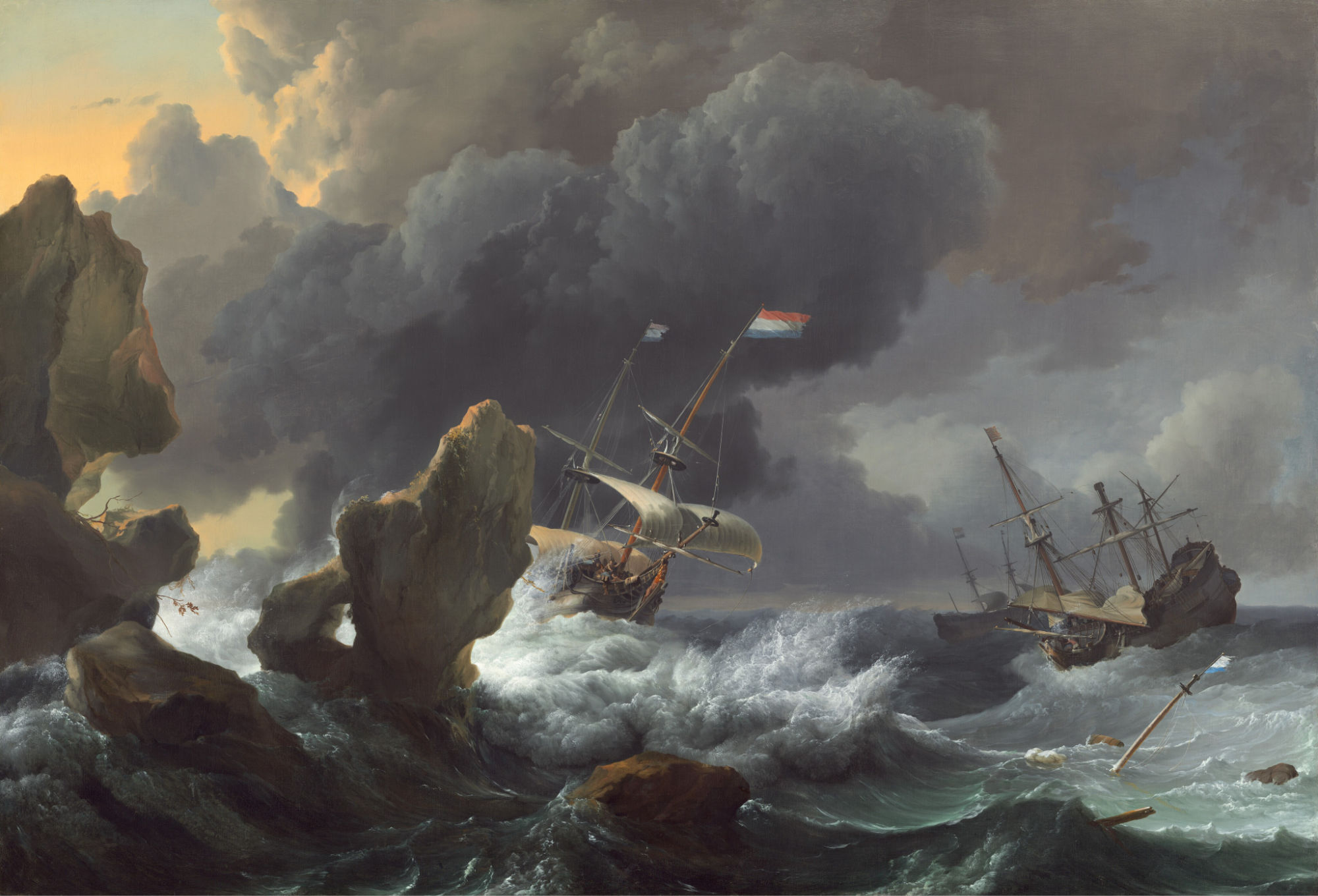Art in Scripture: Peace! Be StillНамуна


Ships in Distress off a Rocky Coast, 1667
LUDOLF BACKHUYSEN I
Ships in Distress off a Rocky Coast, 1667, Oil on canvas, 114.3 x 167.3 cm, The National Gallery of Art, Washington, DC; Ailsa Mellon Bruce Fund, 1985.29.1, Courtesy National Gallery of Art, Washington
Opening Prayer:
O LORD, may we surrender our carefully arranged plans to You, whose constructs are greater than we could ever dream. When our efforts are thwarted by forces outside our control, be with us. Help us gracefully accept that You are Due North, and Christ is our compass.
When we experience loss, fill that void with Your presence. When we stray from the path of righteousness, lovingly guide us back to it. When we don’t understand suffering, please teach us.
We cry out to You in our darkest hours and praise You in our greatest victories. You are the God of the wind, the waves, and the seas. Just as you guide us when our ship runs aground, you calm the raging waters, both within and without. We thank you for this peace that only You can provide.
Thoughts for Reflection:
Ludolf Backhuysen I’s 1667 painting, Ships in Distress off a Rocky Coast, depicts Dutch merchant ships in grave danger of running aground—a very real risk for ambitious and brave businessmen in the seventeenth century. This artwork conveys the unforgiving nature of the sea, whose power can easily splinter even the sturdiest of ships against a rocky coastline.
An Excerpt From The Visual Commentary On Scripture
Precarity Commentary By Spike Bucklow
In The Visual Commentary Of Scripture, commentator Spike Bucklow writes that during this period in history, “Seascapes were often displayed over doorways as reminders of the perils associated with passage from one state to another. The painting could have physically hung at a threshold between rooms, but its position may have symbolized the dangers of all transitions—those associated with economic exchanges, and also those of exchanges with the divine.
“The book of Job suggests that the nature of both such exchanges is inherently ‘precarious’ (a word etymologically related to ‘prayer’). The ‘ends of the earth’ are known only to God (Job 28:24, RSV). In Job, the pursuit of worldly wealth ‘to the farthest bounds’ (28:3, RSV) is compared to the search for wisdom, and in both cases the pursuer’s whole existence is at stake. Appropriately, the mariners in this painting, like the miners in Job 28, ‘swing to and fro’ above ‘the deep’ (vv.4, 14, RSV).
“Merchants invested money in the hope of greater returns. But of course, as the painting shows, things can go awry. If the ship also represents the turbulent voyage of the soul on its way through life, then it is a worthy support for meditation on the whole book of Job, which is about how a rich man’s faith was tested by the loss of his wealth.”
Continued Reflection:
In addition to Job 28, today’s selection of Scriptures will guide you to focus on and contemplate God’s immense power, even in the face of suffering. When we remember He is God of everything—and when we hold fast to all He can do—it’s possible to replace uncertainty with awe, and fear with holy joy.
About this Plan

This devotional reading plan pairs vivid artwork with Scripture to bring to life the storm-tossed moments when Jesus calmed the sea. Each day invites reflection on masterworks that capture both the chaos of the waves and the peace of the Savior’s command. As you consider the disciples’ fear, God’s sovereignty, and the hope found in Christ’s presence, you’ll be encouraged to anchor your faith in Him. Engaging your eyes, heart, and spirit, this journey reminds you that the One who speaks, “Peace! Be still!” still commands the winds and waves today.
More
Нақшаҳои марбут ба мавзӯъ

From Creation to Calling

Doing Chores - Can Helping Around the House Draw Us Closer to God? God in 60 Seconds

Acts 27 | God in the Storm

The Future According to God

Dear Church Wanderer,

Psalms for Real Life

Self-Actualization – and Now It’s All About Me?

Fully Loved, Fully Known: Known by God. Loved Without Limits.

Hidden Treasure in Dark Places: Heartbreak & Hope
